A convergent beam is incident on two slabs placed in contact as shownin figure. Where will the rays finally converge?
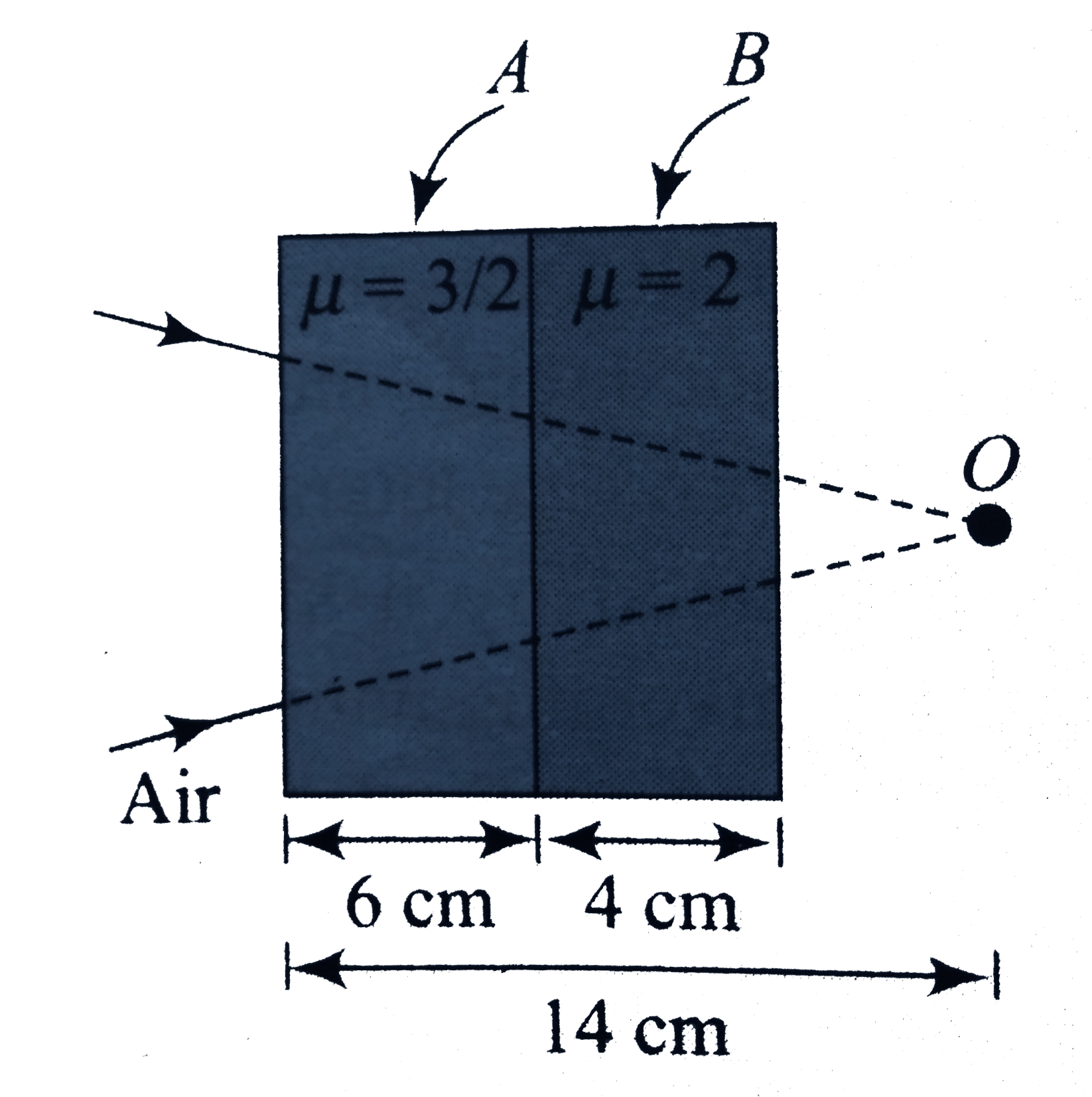
Step by step video & image solution for A convergent beam is incident on two slabs placed in contact as shownin figure. Where will the rays finally converge? by Physics experts to help you in doubts & scoring excellent marks in Class 12 exams.
Updated on:21/07/2023Topper's Solved these Questions
- GEOMETRICAL OPTICSBook:PHYSICS GALAXY - ASHISH ARORAChapter:GEOMETRICAL OPTICSExercise:Practive Exercise 5.4
Explore 11 Videos
- GEOMETRICAL OPTICSBook:PHYSICS GALAXY - ASHISH ARORAChapter:GEOMETRICAL OPTICSExercise:Practive Exercise 5.5
Explore 12 Videos
- GEOMETRICAL OPTICSBook:PHYSICS GALAXY - ASHISH ARORAChapter:GEOMETRICAL OPTICSExercise:Practive Exercise 5.2
Explore 6 Videos
- ELECTROSTATICSBook:PHYSICS GALAXY - ASHISH ARORAChapter:ELECTROSTATICSExercise:Unsolved Numberical Problems
Explore 73 Videos
- HEAT AND THERMAL EXPANSIONBook:PHYSICS GALAXY - ASHISH ARORAChapter:HEAT AND THERMAL EXPANSIONExercise:UNSOLVED NUMRICAL PROBLEMS FOR PREPARATION OF NSEP, INPhO & IPhO
Explore 82 Videos
Similar Questions
A converging beam of light rays incident on a glasa-air interface as shown in figure. Find where these rays will meet after refraction.
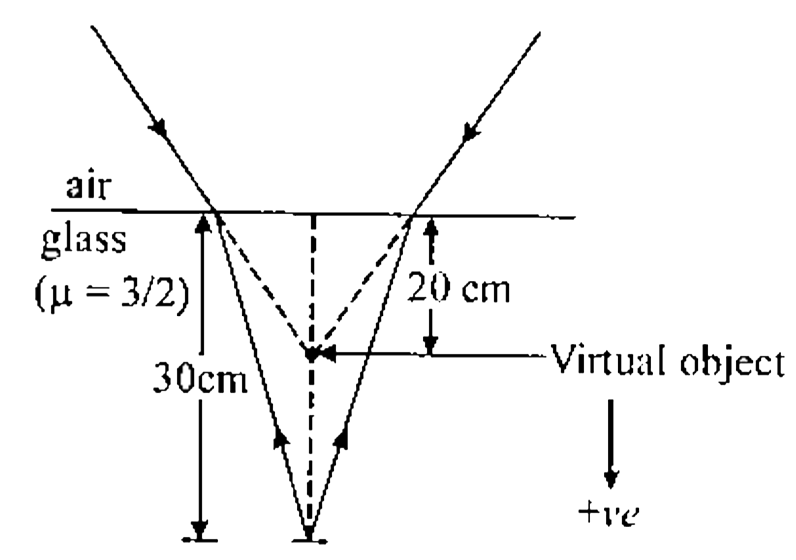
View SolutionA converging beam of light is incident on a right angled isosceles prism as shown in the Figure. The marginal rays in the beam are incident at angle ±θ. The refractive index for the glass of the prism is μ=1.49(=1sin42°) . Find the maximum value of θ for which no light comes out of the hypotenuse surface.
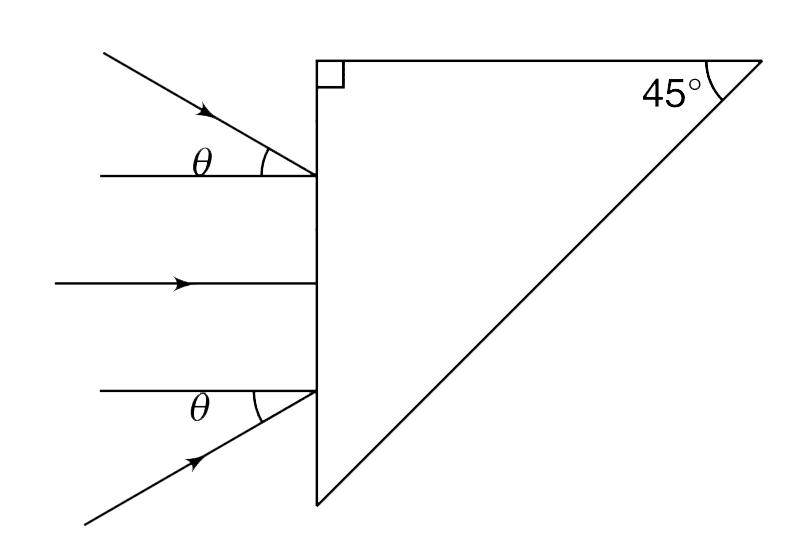
View Solution
Knowledge Check
A convergent beam is incident on a convex mirror. Reflected light
Amay form a real imageBmay form a virtual imageCmust form a real imageDmust form a virtual imageFind the focal length of a convex mirror foron which convergent beam of light is incident and converge to a distance 12 cm from the pole of the mirror. An inverted image of the same size is formed coincident with the virtual object.
A24 cmB12 cmC6 cmD3 cmConsider a light beam incident from air to a glass slab at Brewster's angle as shown in figure.
A polaroid is placed in the path of the emergent ray at point P and rotated about an axis passing through the centre and pependicular to the plane of the plaroid.
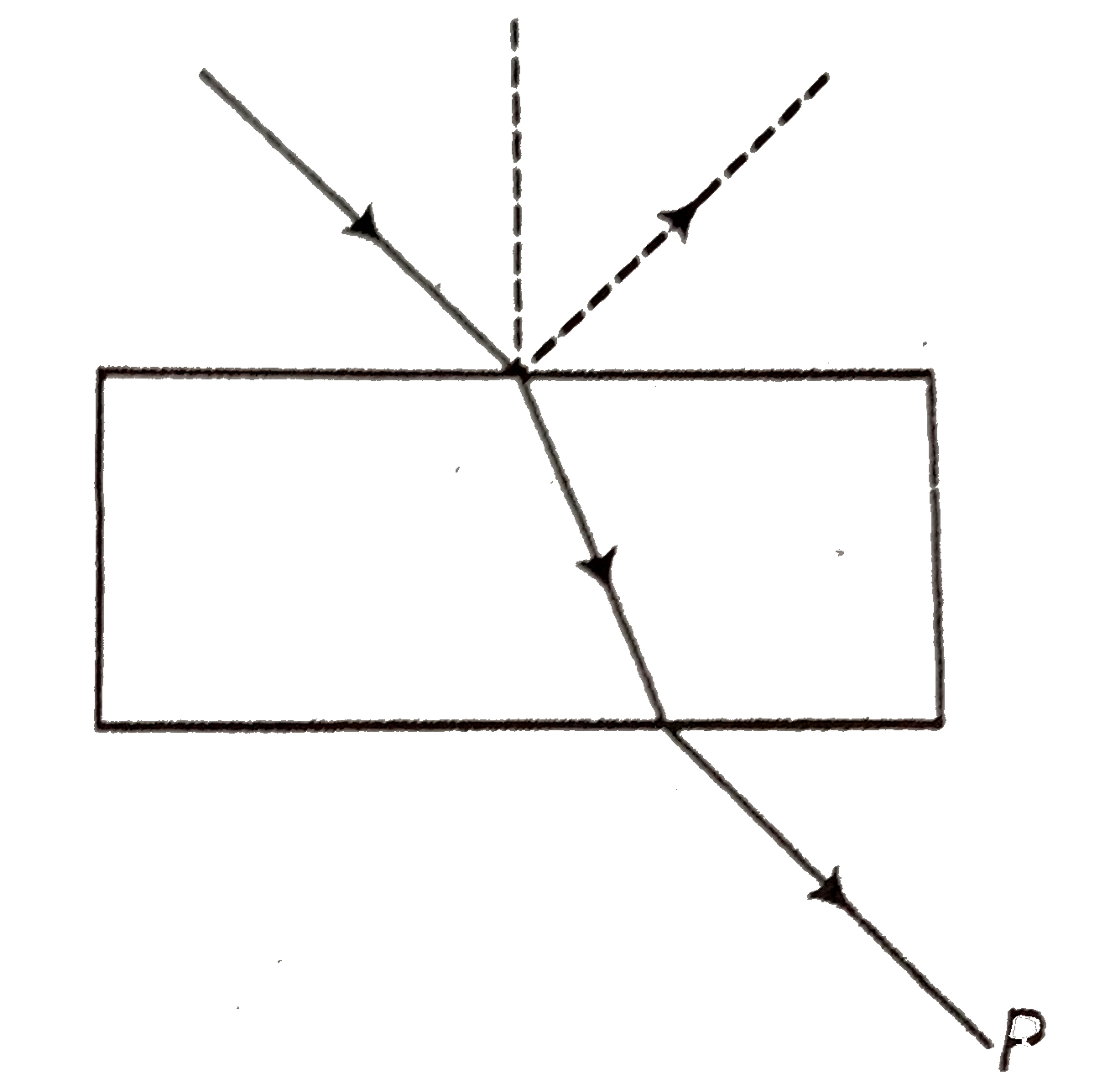 Afor a particular orientation, there shall be darkness as observed through the polaroidBThe intensity of light as seen through the polaroid shall be independent of the rotationCThe intensity of light as seen through the polaroid shall go through a minimum but not zero for two orientations of the polaroidDThe intensity of light as seen through the polaroid shall go through a minimum for four orientations of the polaroid
Afor a particular orientation, there shall be darkness as observed through the polaroidBThe intensity of light as seen through the polaroid shall be independent of the rotationCThe intensity of light as seen through the polaroid shall go through a minimum but not zero for two orientations of the polaroidDThe intensity of light as seen through the polaroid shall go through a minimum for four orientations of the polaroid
Two identical thin isosceles prisms of refracting angle A and refractive index μ are placed with their bases touching each other and this system can collectively act as a crude converging lens. A parallel beam of light is incident on this system as shown in Figure. Find the focal length of this so called converging lens.
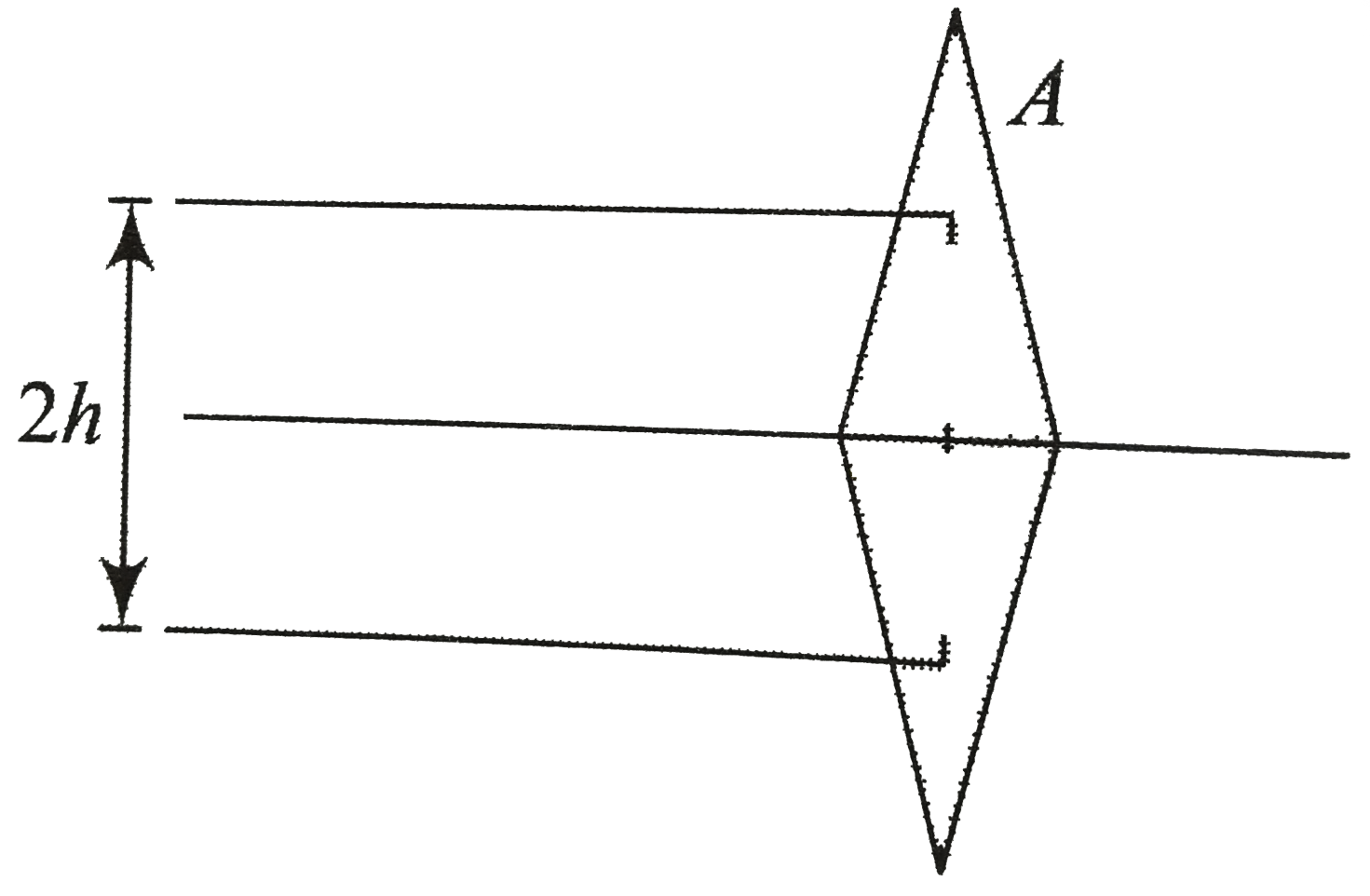
View SolutionA converging set of ray, traveling from water to air, is incident on a plane interface. In the absence of the interface, the rays would have converged to a point O, 60 cm above the interface. However, dur to refraction the rays will bend. At what distance above the interface will the rays actually converge?
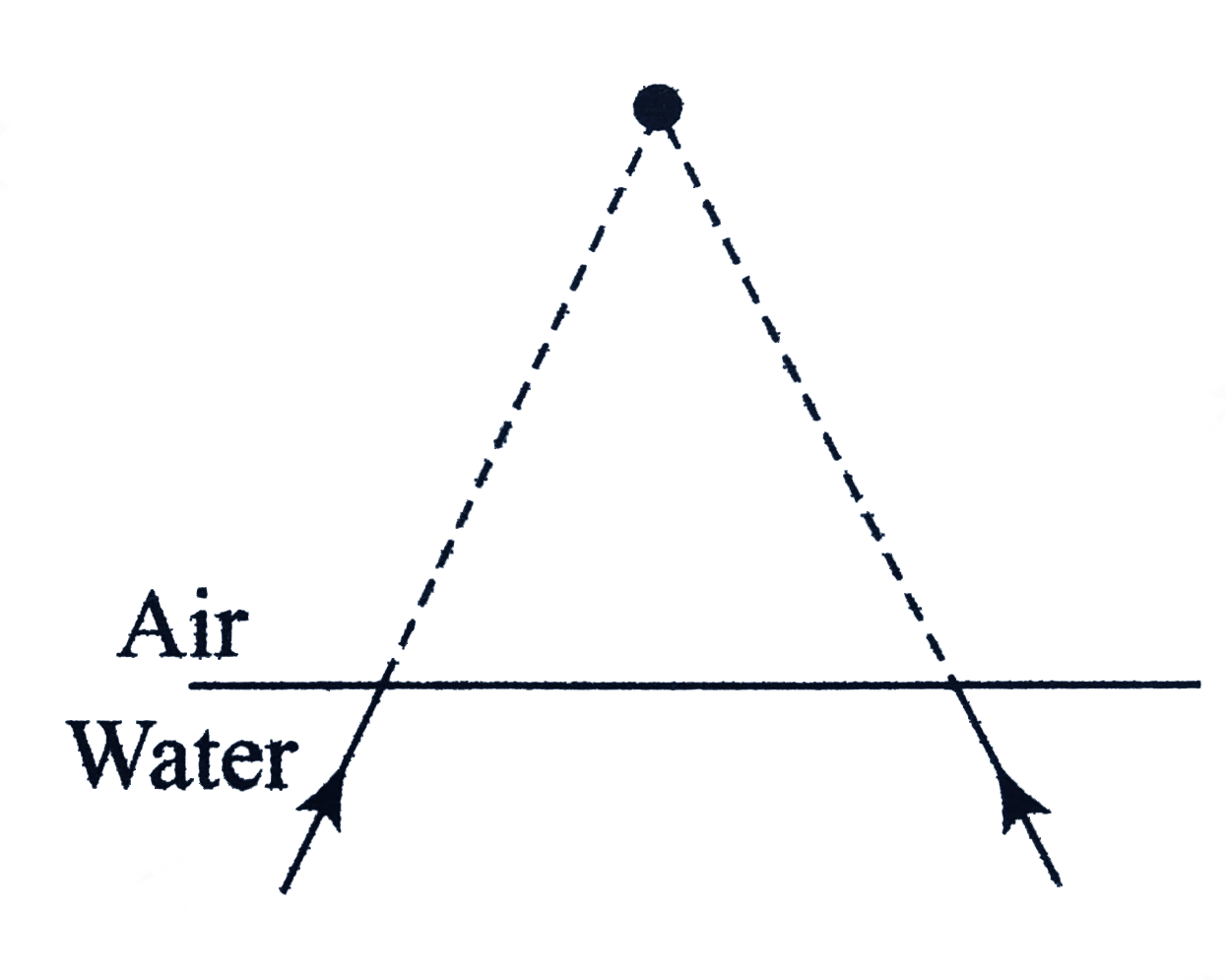
View SolutionA converging beam of rays in incident on a diverging lens. Having passed through the lens the rays intersect at a point 15cm from the lens. If the lens is removed, the point where the rays meet, move 5cm closer to the mounting that holds the lens. Find the focal length of the lens.
View SolutionFigure shows a glass sphere of radius 10 cm. along its diameter AB from one side a parallel beam of paraxial rays incident on it. What should be the refractive index of glass so that after refraction all rays will converge at opposite end B.
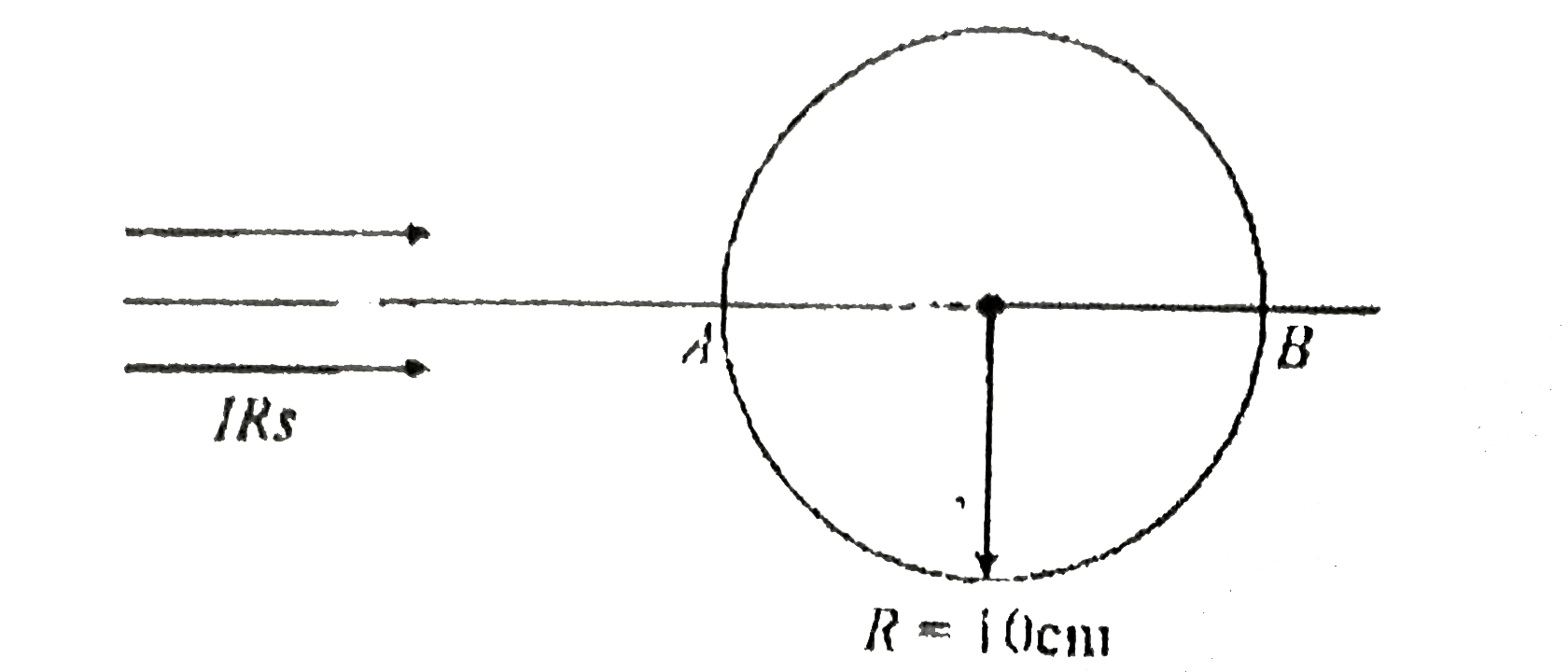
View SolutionConsider a light beam incident from air to a glass slab at Brewster's angle as shown in Figure.

A polaroid is placed in the path of the emergent ray at point P and rotated an axis passing through the centre and perpendicular to the plane of the polaroid.
View Solution

